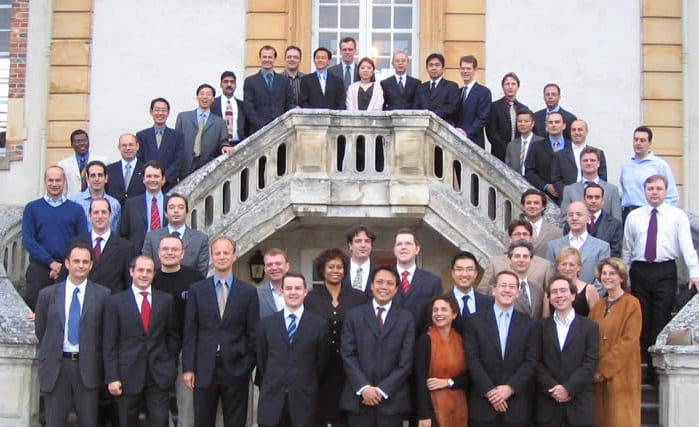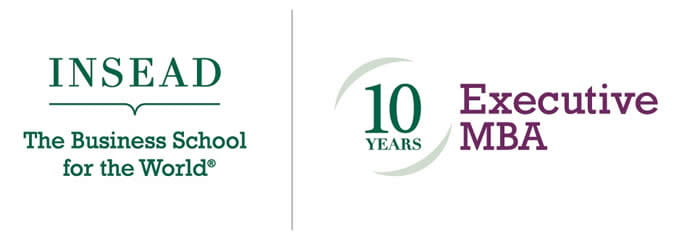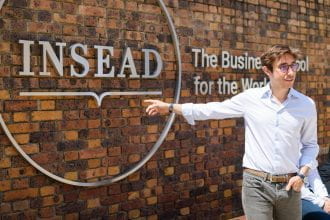In 2001, the late Professor Dominique Héau was given the task of developing a new degree – and he gave the idea of alternating study with work a whole new twist. Thus the unique INSEAD EMBA programme was born.
Dominique’s vision, as INSEAD’s first Dean of EMBA, was to offer senior executives, managers and seasoned entrepreneurs a rigorous academic programme with an added focus on action learning, deriving insights from participants’ real-life problems and experiences. It was to be the best of both worlds. And of course it would take INSEAD’s unashamedly international approach.
These ideas, combined with an unswerving commitment to maintaining the highest standards of quality and diversity, crafted a world-class programme for visionary leaders.
As the programme enters its second decade, the focus will shift from an emphasis on building the reputation of the brand, to consolidating the programme’s achievements and propelling an already well-established EMBA programme to the next level. Exploring enhanced technological and geographical opportunities will define INSEAD’s Executive MBA programme as it advances in its second decade.
However our Dean of Degree Programmes, Urs Peyer, who is now responsible for the direction of the EMBA programme, is very clear on one thing “Our future goals and objectives for the EMBA won’t compromise the quality and diversity of the programme, which is celebrating the 10th anniversary of its first graduating class.”
“New ways of interacting through new communication technologies will become more and more important in business, as teams become increasingly geographically dispersed. The beauty of INSEAD is that we can lead the way in applying these technologies for learning and expose participants to their business potential at the same time.” says Urs.
In addition to developments in technology, INSEAD can be expected to build on the global exposure it delivers in the programme. The school’s three campuses – Singapore, Fontainebleau and Abu Dhabi – offer an educational advantage without parallel. Adding modules in different geographical areas also enriches the international experience. Last year a module was held in Brazil and this year participants will visit Silicon Valley.
“We’ve created a multi-campus model, with localised content for each location. Yet at the same time, we’ve integrated the different sections into a single programme,” explains Javier Gimeno, Professor of Strategy who was Dean of the Executive MBA from 2009 to 2011.”The great thing for participants is that they graduate as one class of 200, giving them a fantastic springboard for their future”.
The Executive MBA is unique in terms of content and delivery. The programme operates smoothly across the three campuses with a core curriculum that is localised to meet the needs of the participants in different regions. When the Tsinghua-INSEAD (TIEMBA) programme was added in 2007, the global reach was further extended to incorporate Tsinghua University’s student and alumni community.
While international scope and diversity help distinguish the programme, there are other components that deliver additional strengths, in particular the Leadership Development Programme (LDP) and the addition of career services in 2009.

LDP is at the heart of the INSEAD EMBA and participants always single this out as one of the programme’s key differentiators.
“That was invaluable,” notes Simon Rieser, a 2012 graduate. “It taught me that I was used to being hands-on and that, as a result, I like to control things too much! It really did help me to step back, let other people do stuff and work as part of a team. Now I have the self-confidence to handle a company with 120 employees and many more partners.”
Bart Willems, another 2012 graduate, expresses similar enthusiasm for LDP: “The Leadership Development Programme was probably the biggest surprise. By the end of the GEMBA, some of my colleagues and our coach knew me better than some members of my own family. We’re still supporting each other today and see each other whenever we can.”
From a faculty and administration standpoint, LDP is a crucial anchor in the EMBA. “Everyone accepted (in the programme) is already a leader in some way but is hungry to become better,” points out Peter Zemsky, Deputy Dean of INSEAD. “We once made a word cloud from the EMBA application essays and the biggest word was “leadership.” It’s no coincidence that the Leadership Development Programme is what makes the INSEAD EMBA unique.”
We want to be able to integrate the LDP, the career development and the curriculum, the three key pillars of the programme, more closely in the future so that together, they can provide a seamless lifelong experience for our participants.
“The introduction of career services into the programme was a major development,” says Charles Galunic, Professor of Organisational Behaviour who was Dean of Executive MBA from 2006 to 2009. “As more and more participants pay their own way through the programme, this became an essential component.”
Another mandate for the programme is to ensure that we reach out to more women and motivate them to join our programme. Currently, 23% of participants are women, which is high for an EMBA programme, but INSEAD is keen to significantly raise that percentage in the years to come. For example, INSEAD makes a point of offering scholarships for women candidates. Increasing the proportion of women students, and thus increasing the representation of women in business leadership positions, remains a key strategic goal.
“I didn’t realise quite how diverse the class would be – or the impact that would have,” says Josephine Wapakabulo Thomas, a 2013 graduate. “Different views, well-articulated, don’t always change your mind. But the dynamic debate of the INSEAD classroom changes the way you think.”



